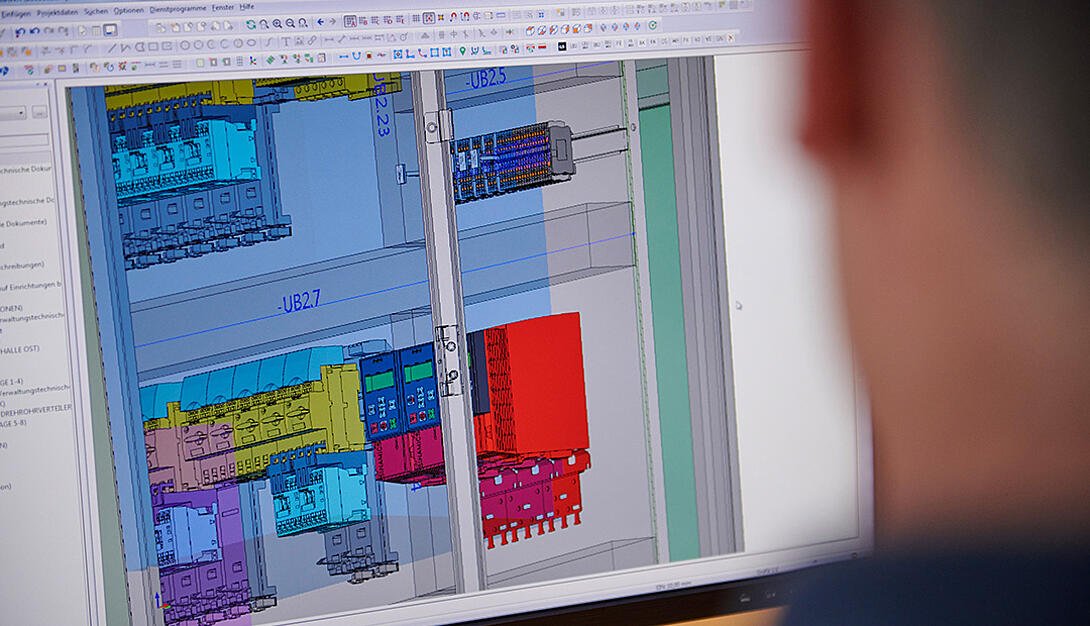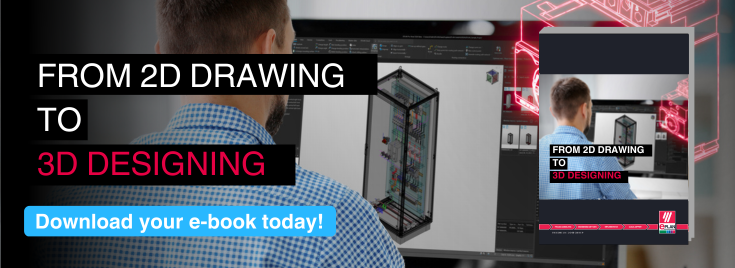Author
 Nigel Grant
Nigel has been working at EPLAN UK for almost 3 years as an Applications Engineer. His main tasks include installing the EPLAN software, giving live demos to prospects and customers and training customers on best practices for using the software. He has previously worked as an Electrical Engineer and a Project Engineer, both of which have driven his passion for helping companies become more efficient and driving their engineering to the next level. Nigel's experience in panel wiring, electrical engineering and project work has given him a well-rounded view of the industry. This enables him to offer customers the best solutions for their processes.
grant.n@eplan.co.uk
Nigel Grant
Nigel has been working at EPLAN UK for almost 3 years as an Applications Engineer. His main tasks include installing the EPLAN software, giving live demos to prospects and customers and training customers on best practices for using the software. He has previously worked as an Electrical Engineer and a Project Engineer, both of which have driven his passion for helping companies become more efficient and driving their engineering to the next level. Nigel's experience in panel wiring, electrical engineering and project work has given him a well-rounded view of the industry. This enables him to offer customers the best solutions for their processes.
grant.n@eplan.co.uk
Tips to achieve more digitalisation in control cabinet construction
Peter Kemptner from the Austrian magazine x-technik asks EPLAN and Rittal 'Can you achieve the digital twin of electrical systems in small steps?' Both sister companies have been committed to the "integrated value chain" for some time and are convinced that the development and construction of switchgear can also be built up in small steps. Each and every one of them can save time and money, avoid mistakes and sustainably increase competitiveness. After all, the advantages of digitalisation, standardisation and automation are obvious.
-
EPLAN and Rittal have developed a large number of products with which all processes can be digitally linked on the basis of standardised data. This enables extensive automation of both the construction and the manufacture of switchgear.
The digital twin needs more and better data
However, there are always hurdles in the way of building the digital value chain. These include, for example, the need to first invest in improving the richness and quality of existing data. In specialist departments, which are already chronically overloaded due to deadline pressures and scarce human resources. Therefore, any additional workload can lead to resistance. The size of the conversion task, which is often perceived as daunting, also becomes a hurdle if only an idealistic end goal is seen and no intermediate steps are discernible.
Small steps towards digitalisation
With their joint know-how, EPLAN and Rittal can help companies overcome hurdles with individual, targeted advice. "This enables them to divide the digitalisation task into small, manageable steps that promise quick wins," explains Reinhard Fürlinger, Senior Key Account and Business Development Management at Rittal Austria.
Robert Erasmus, Technical Business Manager AT/SEMEA at EPLAN, adds: "It is important that management is behind the digitisation project because in many places it will be necessary to create organisational prerequisites."
Tips from the experts
In order to achieve more digitalisation in small steps, Fürlinger and Erasmus give specific tips.
- 1. Use existing/agreed structures
We know that too often than not, electrical and mechanical still work in silos. Whilst the two disciplines must remain separate units with individual specialists, Reinhard Fürlinger says "a close cooperation between the disciplines is nevertheless very useful". Erasmus goes on to explain that the joint use of product data or product lifecycle management (PDM / PLM) is recommended and "would result in a uniform database across all disciplines".
- 2. Standardise engineering
It's common knowledge that mechanical engineers have already replaced traditional methods of design with function-orientated methods such as facilitating changes and variant creation. However, electrical design is still some way behind.
Robert Erasmus reports that "Eplan offers product structuring workshops in which existing plans are analysed, as well as standardisation options and reuse potentials, are identified" to help engineers take a small step towards digitalisation.
- 3. Include manufacturing in the design phase
Lengthy processes such as wiring a control cabinet can be reduced by adding extra information to a project in the design stage. In this example, by adding wiring lists to a circuit diagram. These can then be checked for completeness by someone in-house with the relevant knowledge i.e an individual in manufacturing. Any changes can then be completed before production begins.
- 4. Use enriched data
Data enrichment from the EPLAN Data Portal can also help shorten the path to complete digitalisation. By using standardised data given by the manufacturers themselves you can be sure the data is correct in terms of electrical, mechanical and logical characteristics. This data then forms the basis for automated machinery such as the Wire Terminal WT from Rittal for wire assembly or even for the digital wiring assistant, EPLAN Smart Wiring.
For more information on improving your control cabinet design and construction, there's one place for it!
The original interview was conducted by Automation - The Industry Platform for X-Technik
https://www.automation.at/bericht/software/kulturwandel_im_schaltschrankbau-2021-04-08
- 2. Standardise engineering




Comments